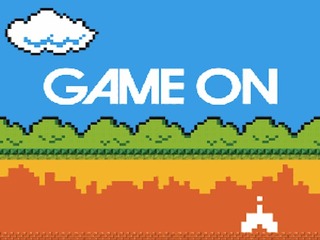Duncan Davidson talks COVID response: what we we did right and wrong, and what needs to happen next
Davidson will be a part of Vator's Healthcare in Politics salon on October 7
Read more...
While most of the day was focused on how to take gamification elements and fold them into any business dealing with human interaction, we couldn't close out the event without hearing from VCs that help fund these companies. So just before we called it a badge-tastic day, Vator Spark invited three VCs to share their insight on gamification and what excites them about the future possiblities.
Alastair Goldfisher, a journalist focused on venture capital with Thomson Reuters and a blogger with peHUb, moderated the discussion.
The panel consisted of (listing from left to right based on the above image): Tim Chang, managing director at Mayfield Fund; Lars Leckie, investor at Hummer Winblad Venture Partners; and Charles Hudson from SoftTech VC.
TC: I grew up playing games across most platforms the last three decades and recently I have invested in Playdom as well BadgeVille. While fitness and healthcare have jumped onto the gamification wagon recently, the next industry catching up would be the world of securities and finance.
LL: In the last year, the shift of bringing social to enterprise has started to include gamification and similar elements. This is the second wave in that socializing trend and its one that has a lot of VCs excited.
And right now there are three layers of what we see in gamification -- entirely gamified systems, companies adding a gaming layer, and those figuring out what is possible now that there is gamification -- essentially they are thinking about what they can do now that they couldn't do before.
CH: Let's be real here, everyone is trying to gamify. Health is one of the biggest jumpers into the group. And really, every one of them works on paper but the only gamified options that work are focused on people that are for already fit. If anyone can successfully get couch potatoes to engage in numbers, that would be big.
TC: When virtual goods arrived, everyone was tacking those monetazation options onto every pitch (much like they are doing now for freemium). We just don't want to see people tack on gaming as a highlight in their VC pitches now, usually we can see right through that.
CH: Exactly, you can't just gamify a bad product. Rather than worrying about the levels of gamification, make sure people want to use the product as is and then use gamification to educate users or build longer-term interest.
TC: Its important to look at the four phases of usership when deciding how to gamily your business. Tie the game into business goals, engage users, retain them, and then convert them. Game mechanics are there to help you track reaching the goals you have -- like converting MAUs to DAUs, not to just give users another thing to do.
LL: Companies like Lithium help build communities using product advocates outside the company to curate and build these communities without getting paid a cent. Businesses need to understand their advocates and speak their language. When people tried to pay these community leaders connected on Lithium, these users were offended because their drive and desire was in this creation, not a physical reward. That is why you need to know what motivates different people in the community, or you risk being inauthentic.
CH: I don't know any consumer facing enterprise that isn't interested in adding more engagement. As more enterprise businesses see this community and gamification value, you will see more developers and companies snapped up just like Salesforce grabbed Rypple.
TC: There might even be a whole new talent pool out of Zynga and FourSquare that could tag themselves as gamification developers and do a killing when businesses go out in search of experts in these methods.
CH: Finding teams that are able to get all the mechanics and a real good user flow will be very valuable very soon.
LL: Much like the porn industry in the early days of the Internet, gaming developers are good in a specific skill set and enterprise and other companies will go to them to change their methodology.
TC: A lot of the major direct consumer acquisitions never has a business model -- what they have is an engaged usership. So, businesses like Instagram, are attractive to larger brands that want that engaged community and their actions on their site. There is a lot of worth in having a really engaged audience, even if the monetization isn't there.
LL: Gamification is the next step in really learning about your product and its users -- and improving the service you provide.
TC: Gamification is really growing now because there is that thought that if real life was an role playing game, what would my skill set be? Why don't I track my real life like I do in the RPG? It is the intersection of the social and psychological behavior that explains why we do what we do. Anything where there is a human experience or a user journey, there is room for gamification.
Davidson will be a part of Vator's Healthcare in Politics salon on October 7
Read more...Artificial or not, intelligence is already woven into every part of life
Read more...Entrepreneurship is about finding solutions to challenges in real time
Read more...Angel group/VC
Joined Vator on
Rosenthal, a principal at venture firm Mayfield Fund, talks about what he's looking to invest in - wireless, communications, infrastructure. He also gives advice on how to pitch him.
Joined Vator on
I've worked as a business reporter and an editor since 1994, with the last 10+ years focused on venture capital, covering everything from startup to exit, including fundraising, data and tech trends, personnel, M&A, IPOs and entrepreneurs.
Joined Vator on
Tim is a proven venture investor and experienced global executive, and was named on the 2011 Forbes Midas List of Top 100 Dealmakers.

